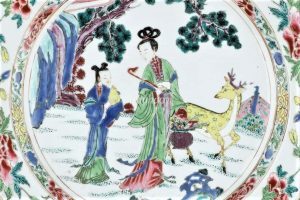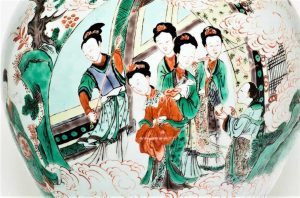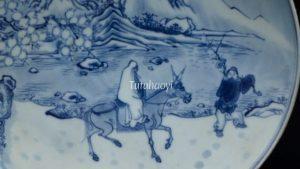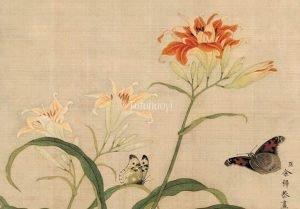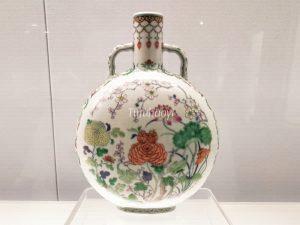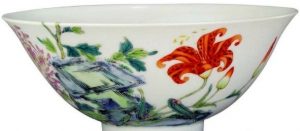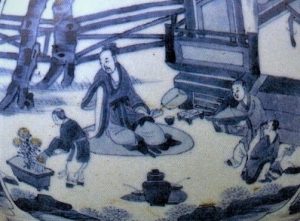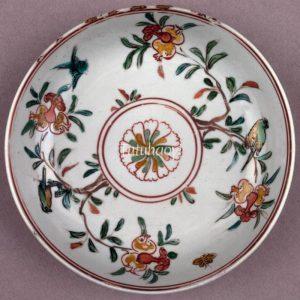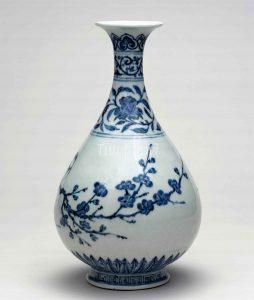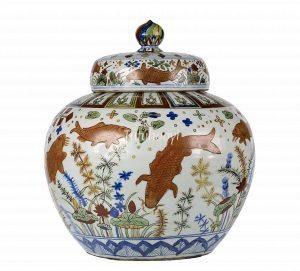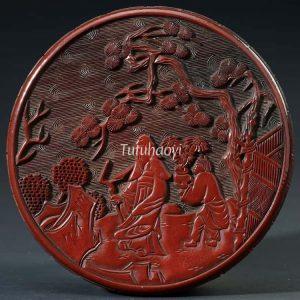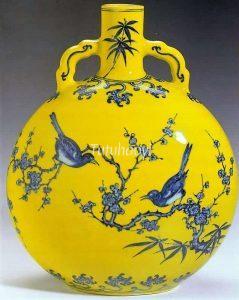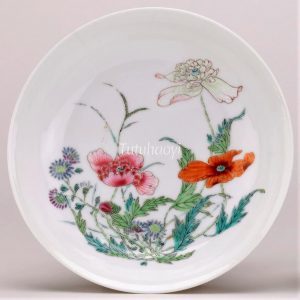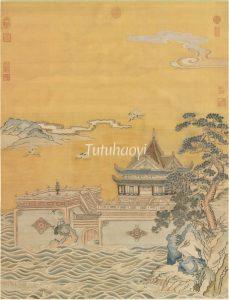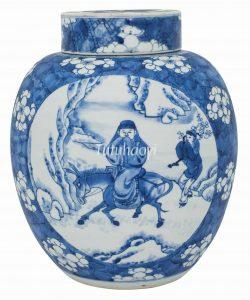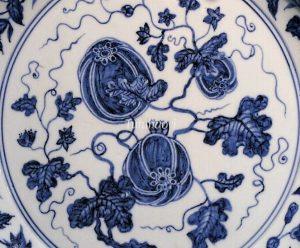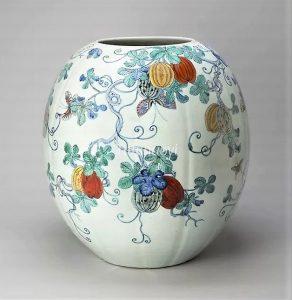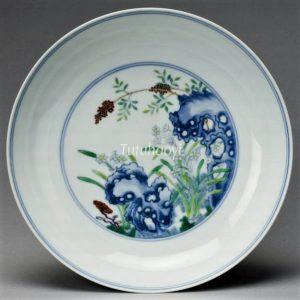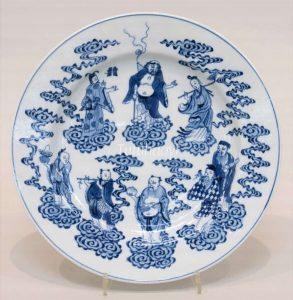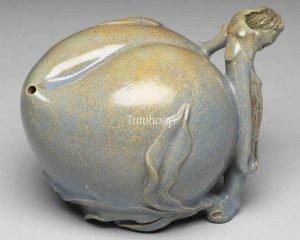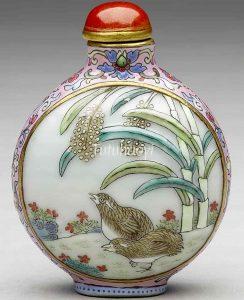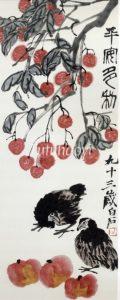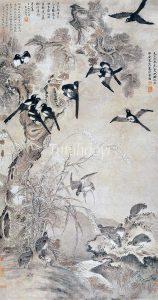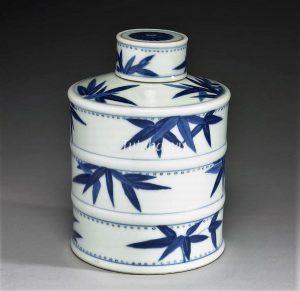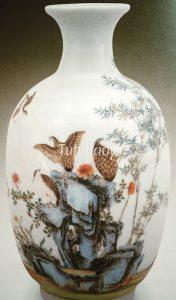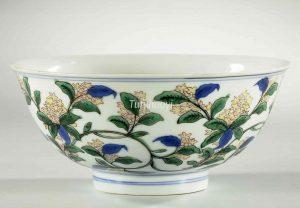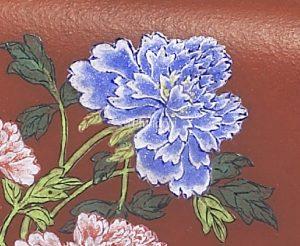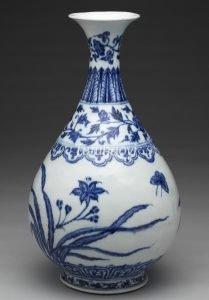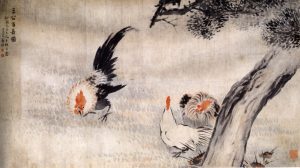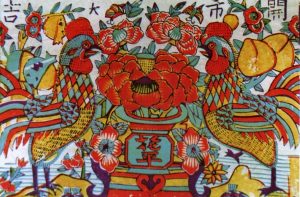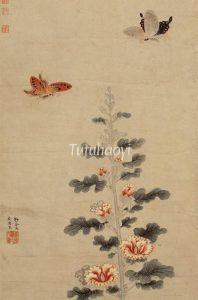Showing Results Containing
The ninth day of the ninth month is a special day in the Chinese lunisolar calendar. According to the Classic of Changes (易经 Yi Jing), ‘nine’ is a Yang number, and the ‘Double Ninth Day’ is considered auspicious and should be celebrated as a ‘Doub...
Have you ever wondered why the image of the prunus has been a popular motif in Chinese decorative art? Why do Chinese literati love to write poems about plum blossoms and paint them in their art works? Dr Yibin Ni will explain to you the symbolic ...
Chinese people deeply respect the elderly and traditionally consider a long existence to be one of the most important blessings in a person’s life. Here are many examples of how artists have combined a variety of longevity symbols to reinforce the...
In Chinese culture, the Mid-Autumn Moon Festival is related to the legendary fairy Chang E, the Moon Goddess. We often see a hare, her loyal companion, and an osmanthus tree in the picture with her against a background of the Moon Palace. However,...
A literati theme with the image of a scholar riding in a snowscape with branches of plum blossoms in the vicinity has been very popular in traditional Chinese visual culture and literature. But who is the scholar in the scene? Art historian Dr Yib...
Dr Yibin Ni has discussed the differences of symbolic meanings of lily between Western and Chinese cultures in his unique research, bringing new insight into pictorial art.
It is widely thought that the two-horned peony is a characteristic and unique feature only existed in Kangxi period. But Dr Yibin Ni has proved otherwise here with a number of examples from other reigns on Chinese antiques.
Is choosing a gift for your mother a difficult task? Not so much if your mother is a big fan of Chinese art. In traditional Chinese decorative arts, there are various images symbolising or referring motherhood. Lily flower is a typical exampleR...
Images of Tao Yuanming Appreciating Chrysanthemums, like many other traditional historical themes, are often mistaken as a mere ‘flowering-picking’ scene, or, worse, simply a ‘figure painting’. Let’s see an example.
Pun Design :
Pomegranate
Punning Details:
– Artist may repeat one particular visual element many times for conveying the numeral ‘bai 百 hundred’.
– A cracked pomegranate showing numerous seeds (bai zi<...
Pun Design :
The tree commonly referred to in English as the flowering plum in fact belongs to the species Prunus mume, which is part of the apricot family.
With the pine and ba...
Fish (鱼 yu) puns with the word yu 余 meaning ‘abundance’, therefore it symbolises wealth and prosperity. Continue Reading
Tao Yuanming (陶渊明, 365–427), also known as Tao Qian 陶潜, the paragon of ‘Fields and Gardens poetry’, spent most of his life as a hermit in a cottage in the countryside, reading, drinking wine, and writing poetry in an unmannered style. He had a unique eye for the beauty and serenity of the natural world c...
The flower of the annual herbaceous species Papaver rhoeas has many different names in the West, such as common poppy, corn poppy, corn rose, field poppy, Flanders poppy, and red poppy. One of its names in China is yumeiren (虞美人), literally meaning ‘Yu the Beauty’. It was named after Yu Ji (虞姬), Consort...
Yang Shen (杨慎, 1488–1559), alias Sheng’an (升庵), is a literatus and poet in the Ming dynasty (1368–1644). He recorded in Volume Ninety-Four of Sheng’an Additional Works a folklore anecdote: ‘In the northern dialect, there is no difference in sound between the he 合 for “coming together” and the he 鹤 for “...
In this scene, there are several Chinese longevity symbols such as the
Meng Haoran (孟浩然, c. 690–740) is one of the most renowned poets in Tang dynasty (618–906). He started off pursuing a civil service career and then abandoned it to concentrate on poetry. He was a major influence on other Tang and later poets because of his innovative focus on nature. There is a play attributed to the note...
The phrase ‘gua die mian mian 瓜瓞绵绵’ is a variation of a line from the poem Mian 绵 collected in the section of the Greater Odes of the Kingdom (Daya 大雅) in the Classic of Poetry (Shijing 诗经). It is used as a metaphor for the continuation and flourishing of the family or clan along the m...
The phrase ‘gua die mian mian 瓜瓞绵绵’ is a variation of a line from a poem in the Classic of Poetry, Shijing 诗经, compiled in China during the period between the 11th to 7th centuries BCE, used as a metaphor for the continuation and flourishing of the family or clan along the male lin...
The Chinese character ‘tian 天’ from the phrase ‘tianzhu 天竹’ for ‘nandina’ is both a homophone and homograph of the character ‘tian 天’ for ‘heaven’. The character ‘xian 仙’ in the phrase ‘shuixian 水仙’ for ‘narcissus’, is both a homophone and homograph of the character ‘xian<...
The character ‘yu 玉’ in ‘yulan hua 玉兰花’ for ‘magnolia’ is the same ‘yu 玉’ for ‘jade’. The word ‘tang 棠’ from ‘haitang hua 海棠花’ for ‘crabapple’ is homophonic with the word ‘tang 堂’ for ‘house’. The combination of the two characters ‘yutang 玉堂’ means ‘jade hous...
The peach fruit usually symbolises longevity or immortality in Chinese pictorial art. The origin of this idea started from legends dating back to the third century. Read Dr Yibin Ni...
The Mid-Autumn Moon Festival falls on the night of full moon in the eighth lunar month. Chang’e, the Moon Goddess, is usually associated with this family-union occasion, together with the festival food – the moon cake (月饼). A legend recorded in an ancient Chinese book, The Huainanzi (淮南子 The Discourses of the Hu...
Pun Design: Quails + seedheads of foxtail millet
Punning Details:
The word ‘sui 穗’ for ‘millet seedhead’ is a pu...
Pun Design: Apples + Continue Reading
Grapes grow in clusters of up to 300 berries each and thus produce an enormous number of seeds. This property was regarded by the ancient Chinese as an apt allusion to their wish for a large number of offspring. That is why grapes are seen adorning various kinds of Chinese antiques, handcrafts, and bric-a-brac, often, to...
Pines, bamboos, and plum blossoms (prunus) form the ‘Three Friends in Winter’ (岁寒三友) motif. The early blossoming plum is the harbinger of spring; the
Pun Design: Quails + Magpies
Punning Details:
The word ‘an 鹌’ in ‘an chun 鹌鹑’ for ‘quail’ puns on ‘an 安’ for ‘peace’ or ‘secur...
Pun Design: Quails + Cereal Plant
Punning Details:
The word ‘an 鹌’ in ‘an chun 鹌鹑’ for ‘quail’ makes a pun on ‘a...
In the current form of the character 竹 zhu, the image of two bamboo stems side by side is still clear. Other ancient forms of the character show the pair gently bending toward one another, illustrating the flexibility of this highly esteemed plant. ‘Young bamboo bends easily’ is one of the many common sayings that refer ...
The motif of Yi Ba Lian 一把莲 is also called ‘yi shu lian’ (一束莲). It is presented as ‘a ribbon-tied bouquet of lotus in bud, full bloom, and seed pods acc...
The Chinese character ‘an 鹌’ in ‘anchun 鹌鹑’ for ‘quail’ makes a pun on ‘an 安’ for ‘peace’. The character ‘zhu 竹’ for ‘bamboo’ is a pun on ‘zhu 祝’ for the verb ‘to wish’ and thus is used here to cue the character cluster ‘zhubao 竹报 (祝报)’ for the verb phrase ‘to wish to...
Lian Hua (lotus) is also called ‘he hua (荷花)’. It is different from ‘shui lian (睡莲 water lily)’ which is another kind of water plant.
Also named leechee, lichee, lichi, or litchi (nut).
Lychee is a tall tropical evergreen tree of the soapberry family (Sapindaceae) native to southeastern China. It was recorded in the Xijing zaji (西京杂记, Miscellaneous Records of the Western Capital), a collection of short semi-historiographical stories fro...
The osmanthus tree prominent in the Moon Palace came to be a symbol for elite talents in the Jin dynasty 晋朝 (265-420). In around Tang dynasty (618-907), ‘plucking a s...
Gourd (葫芦 hu lu) in Chinese is pronounced similar to ‘fu (福, fortune)’ and ‘lu (禄, wealth)’, therefore its image is often used as a pun ...
Osmanthus blossoms in autumn and is conventionally regarded as the flower of the eighth month of the Chinese lunisolar calendar. Its sweet scent is discreet, distinctive, and unforgettable, and has a legendary position in Chinese poetry and art. It is associated with the moon because ancient Chinese wanted to explain the...
Common sources such as Baidu refer to the motif of a peony flower head with two distinctive ‘horns’ as a characteristic feature unique to Chinese porcelain of the Kangxi ...
Lily flowers and butterflies form a pun rebus picture known as ‘Xuān Dié Tú 萱耋图’, meaning ‘May mother live up to a ripe old age’. ‘Xuan 萱’ in the picture...
‘Xuan 萱’ comes from ‘xuan cao 萱草’, the Chinese name for ‘lily’. In traditional Chinese decorative arts, lily flowers symbolise motherhood and maternal bonds with children, and they figure prominently on articles created for mothers, expecting or being a birthday girl.
Related Pun Picture:...
‘San gong 三公’ are the ‘Three Top Lords in the Imperial Court’. The ‘gong 公’ from the Chinese name ‘gong ji 公鸡’ for ‘rooster’ puns on the Chinese name for ‘lord’ and three roosters in the picture represent the three top lords, which are the three top positions in the imperial court. The Chinese ...
Pun Design:
Persimmon + Chicken/ rooster/ cockerel
Punning Details:
– ‘shi 柿’ in ‘shi zi 柿子 persimmon’ is a pun on ‘shi 市 business’
– ‘大鸡 da ji’ for ‘large Continue Reading
The primary symbolic meaning of the hollyhock (shu kui 蜀葵) is the good wish for longevity. The secondary implication is based on the perennially sun-facing nature of the hollyhock. In the old days, people compared their emperor or statesman to the sun and themselves to the hollyhock, implying that they would alw...
Lotus flower is one of the most commonly seen motifs in Chinese traditional artworks. It is particularly favoured by scholars because one of its biological characteristics is that it grows out of mud yet blooms pure and untainted flowers, which scholars refer to their own uncorrupted nature.
Lotus in Chinese can b...


